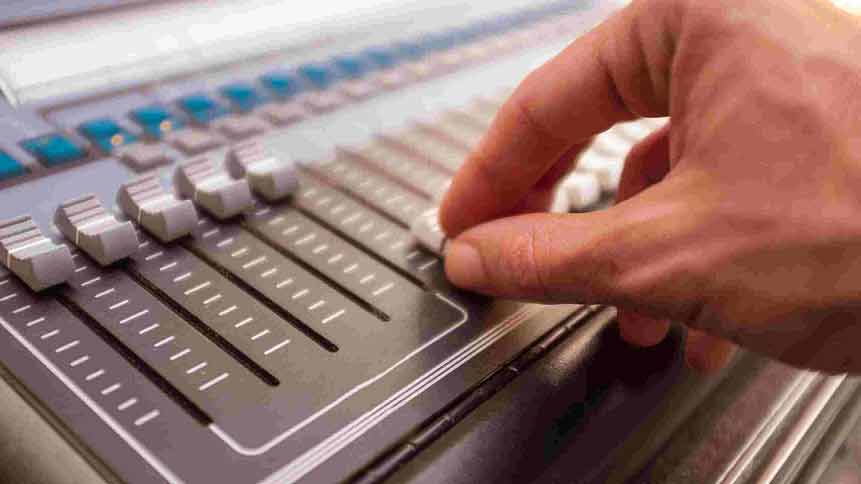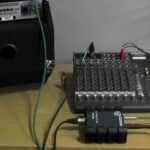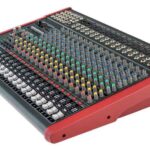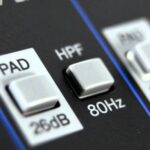A mixing console is used for a variety of purposes, the most common of which is to route audio signals from multiple input sources to multiple output destinations. For example, a typical mixing console might have 32 inputs and 16 outputs. The inputs would be connected to microphones, musical instruments, tape players, etc., while the outputs would be connected to amplifiers, speakers, recording devices, etc. In this article, we covered in detail what is a mixing console used for
The mixer would then allow the sound engineer to control the levels of each input and output independently.
A mixing console is a vital piece of equipment for any audio engineer. It allows the engineer to control the levels of each individual track, as well as add effects and process the overall mix. Without a mixing console, it would be very difficult to create a professional sounding final product.
Table of Contents
Mixing Console Price
A mixing console is a vital piece of equipment for any recording studio. They come in all shapes and sizes, but how much should you expect to pay for one? The answer, as with most things in the music world, is that it depends.
The price of a mixing console can vary greatly depending on the features and quality you need. If you’re just starting out, you may be able to get away with a smaller, more basic model. But if you’re running a professional studio, you’ll need something that’s robust and packed with features.
At the low end of the market, you can find mixers for around $100. These will usually have a fairly limited feature set, but they can still be perfectly adequate for simple recordings. At the other end of the spectrum, top-of-the-line mixers can cost tens of thousands of dollars.
These will offer an incredible range of features and functions, and will be built to last a lifetime. So what’s the best option for your needs? It really depends on your budget and what level of quality you require.
With so many options on the market, there’s sure to be a mixer out there that’s perfect for your situation.
Also Read: Best Mixing Console For Recording Studio

What are the 3 Main Functions of a Mixer Console?
In a nutshell, a mixer console takes audio signals and combines them together. The three main functions of a mixer console are to mix, route and control the audio signals.
The first function of a mixer console is to mix the audio signals together. This is done by adding or subtracting the levels of each signal until the desired sound is achieved.
The second function of a mixer console is to route the mixed audio signals to their respective destinations. This can be done either manually or via an automated system.
The third function of a mixer console is to control the level of each signal. This ensures that each signal is at its optimum level before being routed to its destination.
What is the Difference between a Mixer And a Mixing Console?
When it comes to audio mixing, the terms “mixer” and “mixing console” are often used interchangeably. However, there is a difference between the two devices. A mixer is a device that combines multiple audio signals together, while a mixing console is a type of mixer that offers additional features and control options.
So, what sets a mixing console apart from a regular mixer? For starters, mixing consoles typically have more inputs and outputs than standard mixers. This allows for greater flexibility when connecting different types of audio equipment.
Additionally, mixing consoles usually offer more detailed control over each individual input signal. This includes EQ controls, level meters, and other features that allow for precise adjustments to be made. Another key difference between mixers and mixing consoles is in their physical size.
Mixing consoles are generally much larger than mixers, which can make them more difficult to transport and set up. However, the increased size also allows for more comprehensive control panels with large-format faders and buttons. Ultimately, whether you need a mixer or a mixing console will come down to your specific needs.
If you require lots of inputs/outputs and detailed control over each signal, then a mixing console is likely the better option. However, if you don’t need as many bells and whistles, then a standard mixer will probably suffice.
What is the Function of a Digital Mixing Console?
A digital mixing console is a device used to combine, route, and change the level, timbre and/or dynamics of audio signals. It is typically used in live sound reinforcement and studio recording applications.
Digital mixing consoles usually have a number of input channels, each with its own gain control knob (trim) and other channel-specific settings such as EQ, aux send levels, mute and pan.
The main output section will also have controls for overall level, master EQ and effects settings. In live sound applications, each input channel can be routed to one or more outputs – for example, an individual microphone could be sent to the main mix but also to a monitor wedge or recording device.
This flexibility means that digital mixing consoles are often used as the ‘heart’ of a PA system, with all audio sources being connected to the mixer which then feeds the amplifiers and speakers.
In studio applications, a digital mixer can be used as part of an automated mixing setup where it can recall saved mixes or create new ones ‘on the fly’ during a recording session.
Alternatively, it can be used as a traditional manual mixer where the engineer adjusts levels manually. Digital mixers generally offer superior sound quality compared to their analogue counterparts due to their ability to process audio signals using 24-bit resolution (or higher).
This results in less noise and distortion when multiple channels are combined or when boosting/cutting certain frequencies with EQ.
How Audio Mixers Work – What is a Mixer & What Does it Do? | Live Sound Lesson
Conclusion
A mixing console is used to control the level, timbre and panning of audio signals. It allows the engineer to mix multiple sounds together, route them to different destinations and create a balance between the various elements. A mixing console typically has a number of input channels, each of which can be routed to one or more output channels.
The engineer can adjust the levels, Equalization (EQ) and effects such as delay and reverb for each channel. The goal is to create a mix that sounds good on all types of playback systems, from small speakers to large PA systems.
Relevant Post:
What to Use With Mixing Console Stereo Channels?
How to Record Sound from Mixing Console for Live Streaming?
How to Use a Digital Mixing Console?
How to Connect Mixing Console to Computer?
What You Need to Know About Live Mixing Consoles?
How to Connect Amplifier to Mixing Console?
What is a Pad on a Mixing Console?
How to Build a Mixing Console Desk?

Williams Kane is a blogger and writer. He’s passionate about writing and connecting with the community, especially when it comes to sharing his ideas through writing.
I am a versatile author with a passion for exploring a wide range of topics on our multi-niche website. With a background in research and a love for writing, I bring a unique blend of expertise to our platform.
My journey began in the world of science, where I earned a degree in biology and developed a deep fascination for the natural world. This background enables me to delve into topics related to ecology, environmental conservation, and the wonders of the animal kingdom.
However, my curiosity knows no bounds, and I have ventured into various other niches as well. From technology trends and digital innovations to health and wellness tips, I strive to provide well-researched and engaging content that informs and entertains our diverse audience.
Furthermore, my dedication to staying current with the latest developments in each niche ensures that our readers receive up-to-date and reliable information. Whether it’s deciphering complex scientific concepts or simplifying tech jargon, I take pride in making complex subjects accessible to all.
Join me on our multi-niche journey, where we explore the depths of knowledge and share insights on a multitude of topics to inspire, educate, and entertain.







